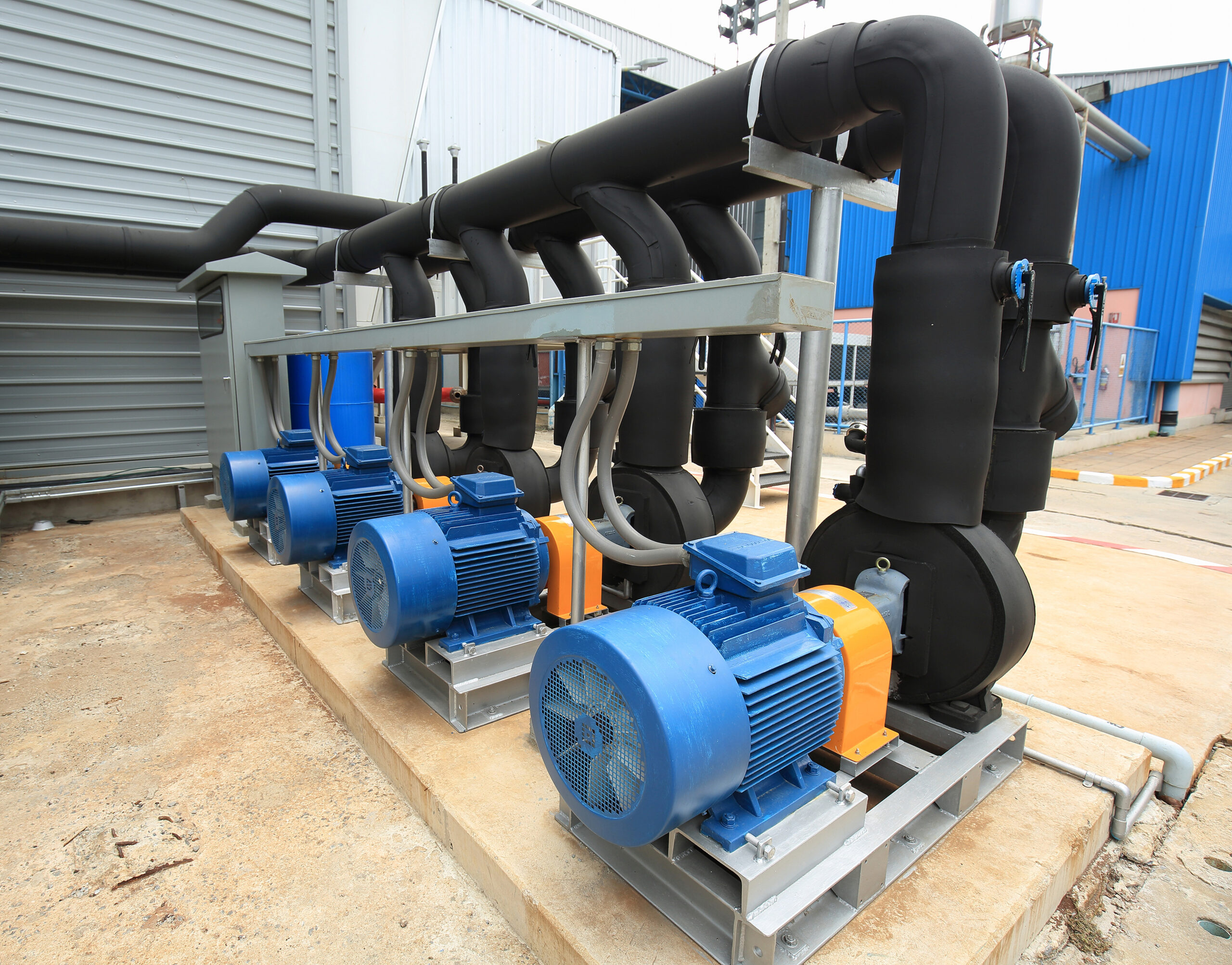How To Improve Chilled/Cooled Water System Efficiency
 Posted on 13th April, 2022 by Ozz
Posted on 13th April, 2022 by Ozz 
What is a chilled water system or process cooling water system?
Both chilled water systems and process cooling water systems work on the same principle of extracting heat from a building or process. Typically, a chilled water system uses a chiller with refrigerants to cool the system, whereas a process cooling water system uses a cooling tower or an air blast cooler.
A cooled/chilled water system extracts heat from a building or process, for example on a manufacturing facility where chilled water systems are employed to cool machinery. The chilled water system cools the equipment by transferring the heat from the machine into cold water pumped through the pipework. As the chilled water circulates through the pipework, it absorbs the heat and then the water is returned to the cooler. The cooler chills the water ready to absorb heat again – then the process continues to cycle.
How can a chilled or cool water system be inefficient?
Chilled/cooled water systems are typically inefficient as they aren’t controlled effectively. This is due to the fact that they are specified for the worst-case scenario, i.e. when the temperature is high and all the equipment is needing to be used at one time. This can therefore mean that when the temperature and demand is lower the system is simply wasting energy.

How can we increase chilled water or cool water system efficiency?
One way to increase a chilled/cooled water systems efficiency is to ensure that the system is controlled correctly. This can be done by monitoring the return temperature of the water and then varying the speed of the pumps and fan units according to demand. This means the pumps and fans run slower when the demand is lower, resulting in energy savings whilst still ensuring the system has the capacity to meet the higher demand when required.
We find many systems still running at a fixed speed, meaning the pumps are running at full speed without any control. These pumps are sometimes valved back or have pressure reducing valves to reduce the flow/pressure. But this doesn’t work: the comparison we use is that it’s like driving your car with your accelerator flat to the floor and holding down the brake at the same time.
If you do have a fixed speed system, Dura Pump can help you to increase your efficiency by retrofitting variable speed controls and optimising your system. This in turn increases efficiency: resulting in drastically reduced carbon emissions and energy costs.
Are the pumps a major part of the chilled/cooled water system?
The short answer to this question: Yes.
Without pumps circulating the water, the system would not function. It’s also worth noting that pumps use a significant amount of electricity – for example a system with 3no. 18.5kw pumps running 24 hours a day, 365 days a year would use 486,180kw/h of electricity – costing £97,236 at £0.20 per kilowatt hour.
Typically, by installing variable speed controls you can save between 35% – 45% of your energy used and cost.

How can Dura Pump help with chilled water systems?
Dura Pump can help you specify, install and commission chilled water pumps, fans and controls.
Our services for these systems include:
- Energy savings with free energy audits
- Supply, install and commission
- Onsite and workshop repairs/refurbishments
- Complete turnkey packages
Contact us today for assistance.




